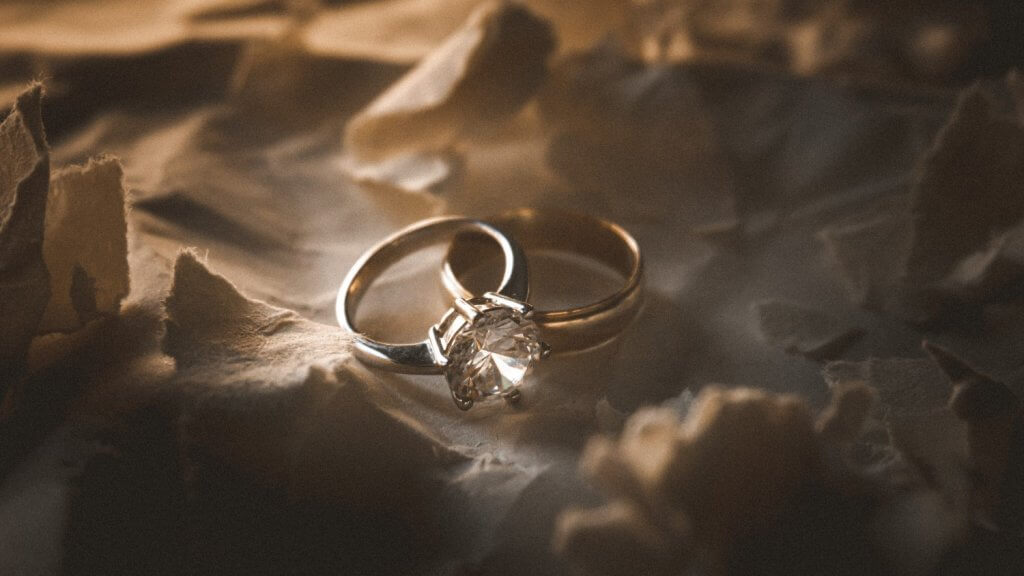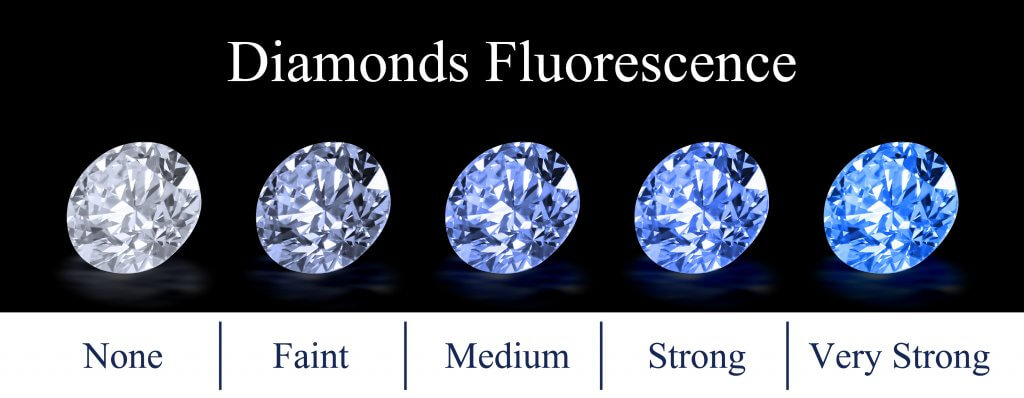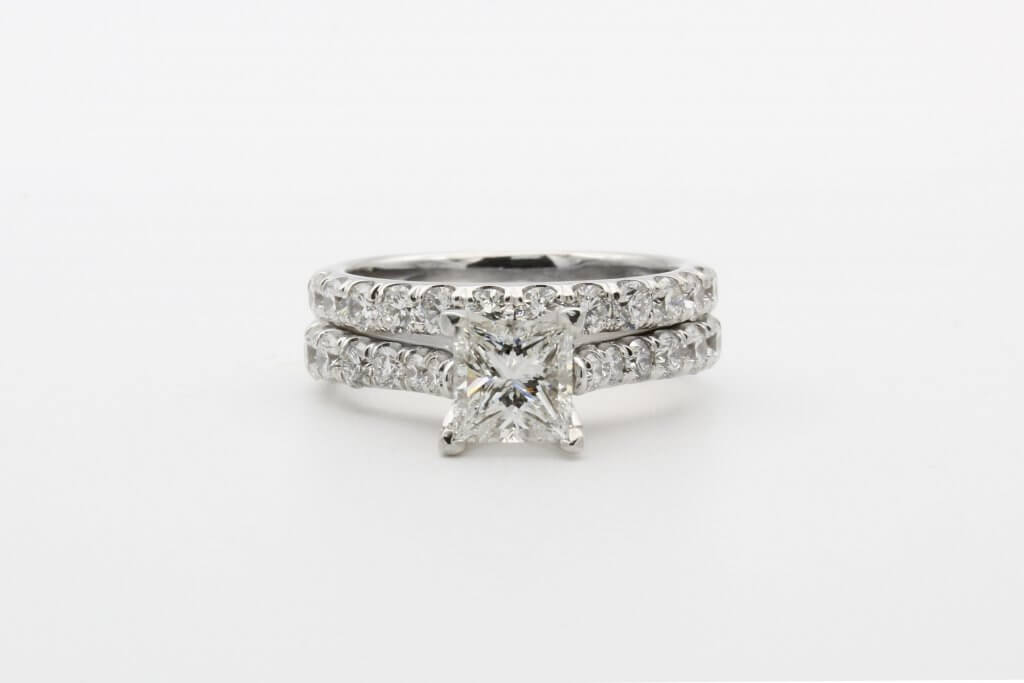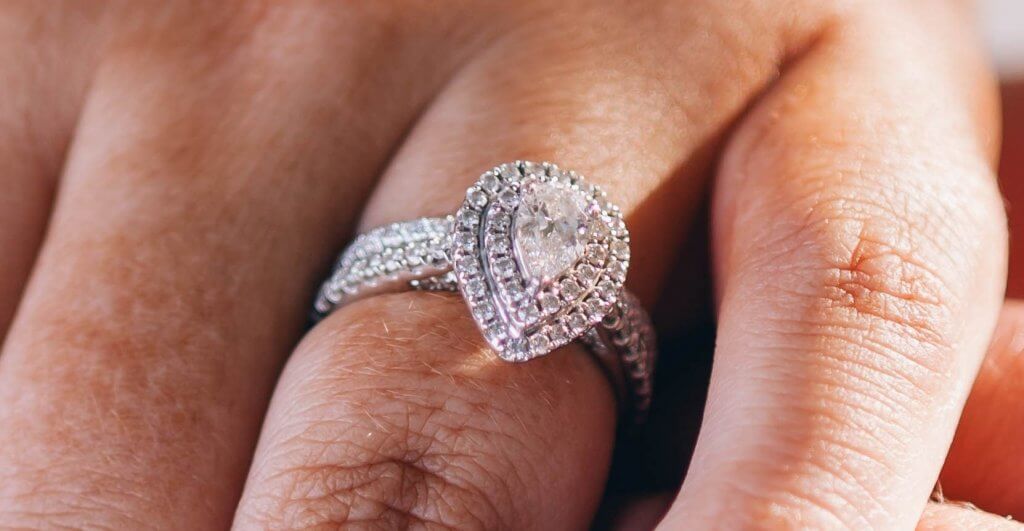Colorless Or Near Colorless: Which Is Best?
Key Takeaways
- The color of a diamond does matter but, like Clarity, you don’t need to take it to the extreme.
- There are different grades to consider, and it is important to read our guide and open yourself up to each option.
- Colorless diamonds, however, are not really worth it. They cost considerably more and there is hardly any noticeable difference between colorless and near colorless diamonds.
- The best grade to go for will fall somewhere inside the near colorless range. We would recommend anywhere between grade D and J, but it really depends on whether you are going for a white gold or yellow gold diamond.

As one of the Four Cs and, in all likelihood, one of the first aspects of diamond quality you learned about when you first started researching the subject, it’s easy to get caught-up on diamond color.
After all, as soon as you become away of the (at times major) color differences between white diamonds, it’s hard to shake the idea that you could wind up spending thousands on a diamond, only to find that, when you first take it out into daylight, it’s actually an unsightly shade of pale yellow-brown.
It’s true that diamond color matters, and that you can’t afford to overlook it, or talk yourself into a lower grade than you’re comfortable with simply because you’ve found a diamond that is ideal in every other respect.
But, as with clarity, you don’t need to take color to extremes. We often advise readers to focus on the Near Colorless range for that reason, despite the fact that everyone shopping for a white diamond will feel that pull toward the Colorless grades.
What are Colorless Diamonds?
When we refer to colorless diamonds, we are talking about GIA graded diamonds with a color of D, E, or F.
As you likely already know, D is the highest color grade a diamond can be awarded. And, while the GIA’s color scale includes twenty-three separate grades (ranging from D through Z) only the top three grades are considered to be Colorless.
Objectively speaking, these are the best grades. Even a jeweler would struggle to spot the difference between them without the right lighting conditions, and even if you had the diamond set in a white gold or platinum setting, the color would remain imperceptible.
Nevertheless, Colorless diamonds are unlikely to be the best place for you to shop from.
What are Near Colorless Diamonds?
According to the GIA, the Near Colorless category of diamonds comprises those with a color grade of G, H, I, or J.
Following immediately on from the Colorless group, Near Colorless diamonds are, as the name suggests, very close to featuring no perceptible color at all. Of course, with four grades contained within this category, it’s a little easier to spot the difference. Comparing a G color with a J color diamond, for instance, will prove a lot easier than comparing a D color with an F color diamond.
Even so, the differences are minor. Consider how close to perfect Near Colorless diamonds are. Yes, it’s important to stay realistic about the potential downsides to being ‘too cavalier’ about your diamond’s color, but it’s also important to realize the benefits to focusing on the Near Colorless range.
Do Near Colorless Diamonds Look Yellow?
In the majority of cases, no. There may be some exceptions to the rule – for instance, if the diamond is a high carat weight, or cut to a shape that tends to retain color, like the Cushion or Emerald cut – but most shoppers find a great value diamond with no visible color from the Near Colorless range.
There are plenty of reasons for this. For starters, Near Colorless diamonds are nearly colorless. While they do contain traces of color, GIA graders will have identified it under strong magnification and laboratory lighting.
And, while the color is there, the opportunities to see it are almost never there.
For starters, a diamond ring is constantly moving. Even when the wearer is sitting still, those tiny movements we all make mean that it’s very difficult for the eye to settle on the diamond.
Couple that with the fact that a diamond ring is always sparkling. Unless you’re in a room with no light (in which case, you won’t see the diamond – let alone its color), those flashes of brilliance and multicolored fire are constantly obscuring any minor inclusions or traces of color.
What’s more, when diamonds are worn against the skin – and particularly when they are set in a warmer toned metal, like rose or yellow gold – they have a habit of ‘drawing in’ a little of the surrounding color. This is part of diamond’s appeal for jewelry, but does mean that even the whitest diamonds will, when worn, appear a little different.
Do Colorless Diamonds Sparkle More?
No. Color matters for the diamond’s appearance, rather than its light performance.
Sparkle is determined predominantly by the strength of a diamond’s cut. Even a D color diamond will suffer from a dull, lifeless light performance if the cut is poor.
This is by far the most important of the Four Cs to get right when it comes to sparkle, and that’s why we would always urge readers to do their research on Cut quality, and diamond proportion.
So, Is a Colorless Diamond Worth it?
No. Colorless diamonds cost significantly more because of the prestige attached to perfection in diamonds, not because there is any profound difference between Colorless and Near Colorless diamonds.
We’re not saying there isn’t any difference. Every single grade is, under the right conditions, distinguishable from the one that came before it, and the one that comes after it. Placed side-by-side – and with the right lighting – these differences become more obvious.
What we are saying is that, while indisputable, the difference between a Colorless and Near Colorless diamond is rarely substantial enough to warrant you paying hundreds of dollars more for the one that looks better on paper.
If you’re working to any sort of budget, then a colorless diamond is as much a waste of money as FL, IF, or even VVS clarity. There’s an element of excitement that comes from owning a diamond so rare and so close to perfection, but how often are you really going to look at the GIA report over the coming decades?
Save your money and forget about buying a colorless diamond.

Jul 18, 2022 By Willyou.net
The Negative Effects Of Fluorescence On Diamond Appearance

Sep 10, 2021 By Willyou.net
Are J Color Diamonds Best Bang For Your Buck?








